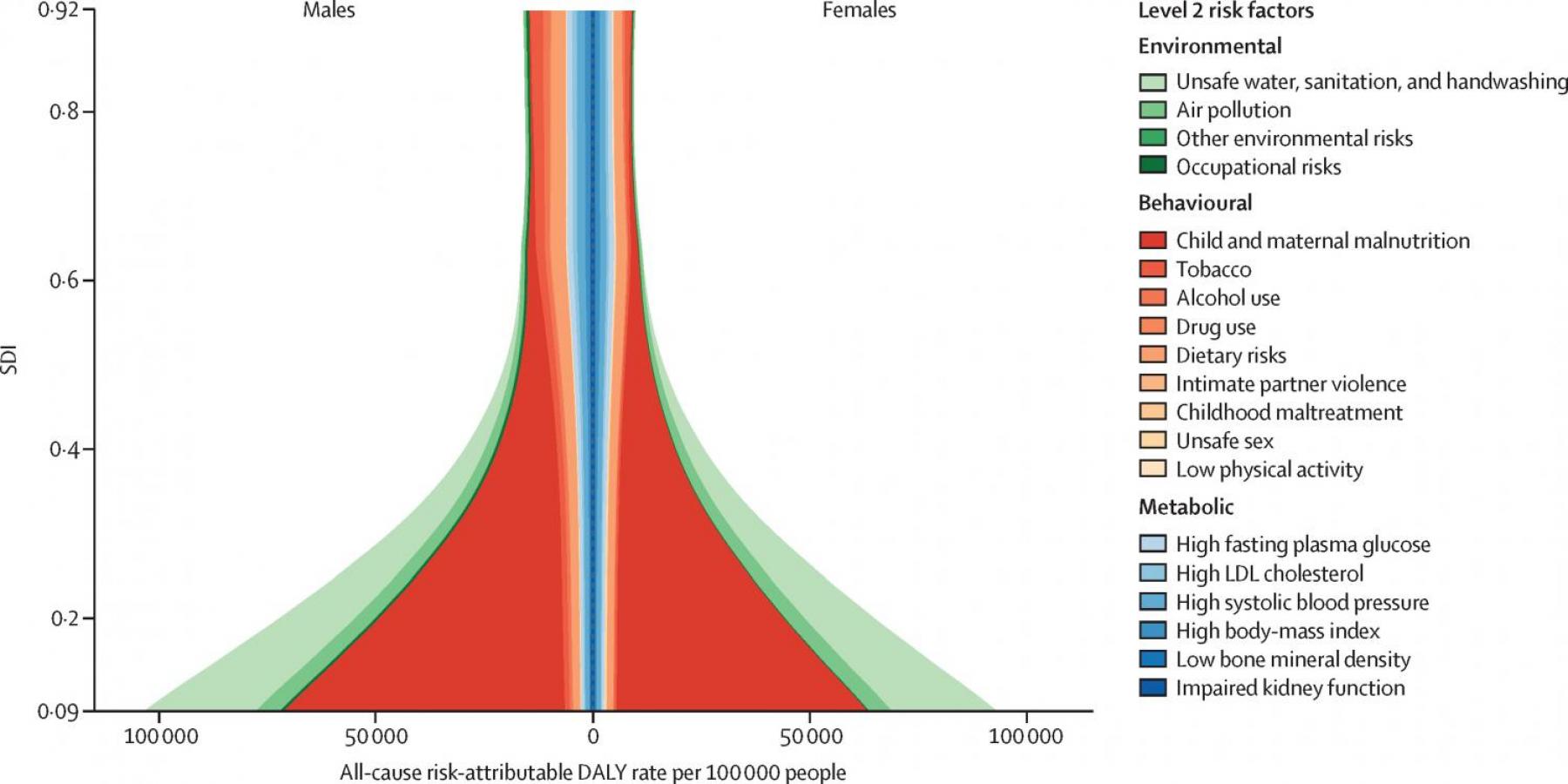The 2017 Global Burden of Disease study released this week corroborates the headline of NCD Countdown 2030 that most nations will fail to meet SDG target 3.4 for reducing deaths from NCDs. Covering 195 countries, the study was carried out by the Institute of Health Metrics and Evaluation, and published in The Lancet.
The study also concludes that there is less than a 5% chance of any country eliminating childhood overweight in children aged 2-4 years, meaning that unless current trends are altered it will be impossible for even a single country to achieve SDG target 2.2 to end all forms of malnutrition.
NCD risk factors rise
The study finds that ischaemic heart disease, stroke and chronic obstructive pulmonary disease (COPD) all caused more than 1 million deaths worldwide in 2017. Key risk factors for NCDs are responsible for an increased share of global disability compared to 1990, with high blood pressure moving from fifth to first place, smoking from fourth to second place, high blood sugar from 11th to third place, and high body-mass index (BMI) from 16th to fourth place. Overall, males are more likely to die than females from an NCD.
"With increasing life expectancy in many countries, the question for all of us in the health policy arena is whether the additional years are spent in good health or poor health,” said Dr Christopher Murray, Director of the Institute for Health Metrics and Evaluation (IHME) at the University of Washington.
"With increasing life expectancy in many countries, the question for all of us in the health policy arena is whether the additional years are spent in good health or poor health.” - Dr Christopher Murray, Director of the Institute for Health Metrics and Evaluation (IHME) at the University of Washington.
“The burden of disabling conditions has serious implications for health systems and health-related expenditures. Global trends among non-communicable diseases indicate that more effort is needed to increase healthy life expectancy,” he added.
In terms of overall population and fertility, the 2017 GBD study also reports that 91 nations are not producing enough children to maintain their current populations, while high birth rates are driving population increases in 104 countries.
The GBD Compare Visualization tool has been updated with all the latest estimates for mortality, life expectancy, causes of death, risk factors, and more. It also includes the chances of each nation meeting 41 of the health-related indicators in the Sustainable Development Goals.
